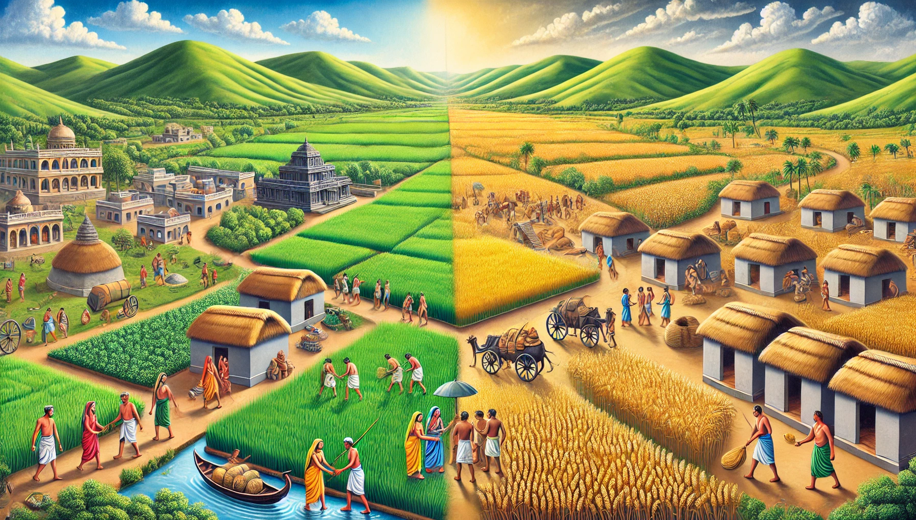In the Deccan Plateau of India, there are two small villages called Ramapuram and Krishnapuram. The two villages are like brothers, having abundant natural resources for agricultural production.

fertile lands
Due to different land fertility reasons, Ramapuram cultivated high-quality paddy (rice), and Krishnapuram produced wheat. The people’s interest in each village was different and mutual between the villages. So, this led to the beginning of trade between these two villages. The trade became so healthy that both villages were healthy and sufficient in food and other interests.
Unfortunate conditions
As years passed, there was a drought in Ramapuram. This made the production or cultivation completely drop due to the scarcity of water in the village. In order to meet their needs, they depended on the import of wheat from Krishnapuram in exchange for rice, which was stocked in their godowns for future use. As their rice was also getting empty, they decided to cultivate again. So, they made a deal with Krishnapuram for water instead of more rice bags for the coming crop. The deal was successful, but due to environmental problems, the yield was not good. The Ramapuram people were unable to meet their promise. As they wanted to try again for better production, they again asked for water from Krishnapuram village.
Idea
A good deal is not free every time. As promises cannot be broken again and again, the two villages documented the deal on bond paper legally. The copy of this primary bond paper was issued to the Krishnapuram village Sarpanch, and they got the water in return for three years.
Raj Kiran, a young farmer in the village, needed more water shares for cultivation to produce much paddy to meet the primary bond water deal. As no person in the village wanted to share their water, he approached his village Sarpanch on this issue. The Sarpanch prepared another bond paper in personal request and gave water to Raj Kiran’s required field. Raj took this bond paper to krishnapuram village sarpanch and received water to his field. This idea went viral in the village and landlords with more water requirements received water with personal bond papers.
Solution
To simplify this the Ramapuram sarpanch started printing their bond papers with a symbol of their village. This idea adopted by connected villagers that was useful in times of bad conditions for buying water reserves in exchange.
Conclusion
In the above story, the bond papers are nothing but currency. It is a promise for which we get commodities in return. Similarly, a country generally uses gold as reserves in exchange with other countries. It prints currency if its reserves are less than requirements. From next time, if you are giving money, it is a promise.
